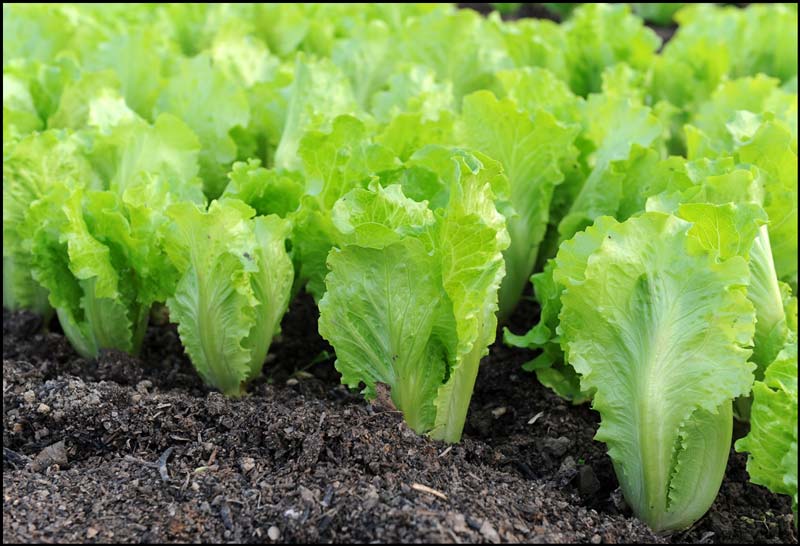|
image from Quiet-corner.com Cold morning. The temperature is 20 degrees, cloudy sky and high today only in the 30’s. BUT this is more seasonable, it is ok.
New food for thought…growing lettuce. Planting, Growing, and Harvesting Lettuce by Catherine Boeckmann If you haven’t tasted fresh, homegrown lettuce, you’re missing out. It’s far superior to the store-bought alternative in both taste and vitamin A content. We’ll show you how to sow, plant, care for, and harvest this versatile salad vegetable. Lettuce is quick-growing, fuss-free, and can be grown just about anywhere. Grown for its luscious leaves, there’s a cornucopia of both hearting and loose-leaf varieties to explore. About Lettuce Lettuce needs little introduction. Grown for its luscious leaves, there’s a cornucopia of both hearting and loose-leaf varieties to explore. Lettuces that form dense heads for harvesting whole include creamy butterhead types, upright romaine and cos lettuces, and the classic, crunchy iceberg. Looseleaf lettuces can be harvested whole or a few leaves at a time, ‘cut-and-come-again ’-style. Choose from the classic salad bowl lettuce, handsome oakleaf types, or any number of other colorful leaves that’ll brighten vegetable beds and ornamental borders alike. Lettuce is a cool-season crop growing well in most regions in the spring and fall. This crop is perfect for beginners; it’s easily sown by seed directly in the soil as soon as the ground can be worked. Because lettuce grows quickly, the best approach is to plant a small amount of seeds at a time, staggering the plantings. Lettuces are a great leafy green because they grow quickly, produce for a long time, and are not very demanding if you keep the plants sufficiently watered. Plus, lettuce grows great in raised beds, making it ideal for small spaces. Lettuces are perfect for containers, which can be placed on decks, patios, balconies, and porches. PLANTING Lettuce prefers a location with 5 to 6 hours of sun, but can benefit from afternoon shade when temperatures soar. Soil should be loose, well-draining, and moist but not soggy. In the weeks prior to planting, amend with plenty of compost for added fertility. Or grow lettuces in pots or tubs of potting soil. Lettuce prefers a bright, open position with good air circulation to promote strong, disease-free growth. Lettuce is a cool-season crop, so in hot climates, you may get better results growing it in a cooler, shadier spot, especially as the young plants start out. Either way, lettuces don’t take long to reach maturity, which makes them an excellent choice for growing in between slower-to-establish crops such as corn or leeks. When to Plant Lettuce Soil temperatures between 45°F and 65°F (7°C and 18°C) are ideal. Cold-adapted varieties can survive much lower temperatures. Make the earliest sowings under cover from late winter to grow on in greenhouse or hoop house beds for a super-early harvest. Then, from early spring, it’s time to sow for growing outside. Direct sowing is recommended. Sow seeds in the ground 2 to 4 weeks before your last spring frost date or as soon as the ground can be worked. Or, to get a head start, start seeds indoors about 1 month before your last spring frost date. Harden off seedlings for 3 days to a week before setting outdoors. If you are buying transplants (small plants) from a garden center or nursery, you may plant between 2 weeks before your last spring frost to 2 weeks after your last spring frost. In most regions, it’s possible to plant another crop of lettuce in the fall or even early winter. See our Planting Calendar for planting dates. Tip: To plant a fall crop, create cool soil in late August by moistening the ground and covering it with a bale of straw. A week later, the soil under the bale will be about 10°F (6°C) cooler than the rest of the garden. Sow a three-foot row of lettuce seeds every couple of weeks—rotate the straw bale around the garden. How to Plant Lettuce Sowings may be made directly into prepared soil or into module trays of multipurpose potting soil. To sow direct, remove any weeds then rake the soil level to a fine, crumbly texture. Mark out shallow drills, 8 to 12 inches or 20 to 30cm apart, using a stringline as a guide if this helps. Then sow the tiny seeds in clusters—a pinch of seeds every four inches or 10cm. Backfill the seed drills, label with the variety and water. Since the seed is so small, a well-tilled seedbed is essential. Stones and large clods of dirt will inhibit germination. Plant seeds 1/8 to 1/4 of an inch deep. Lettuce seeds need light to germinate, so don’t sow them too deep. Seeds may be sown in single rows or broadcast for wide row planting (loose-leaf varieties are best for this). When broadcasting, thin 1- to 2-inch tall seedlings for the proper spacing. Spacing between plants depends on the variety: Loose-leaf lettuce: Plant or thin to 4 inches apart. Romaine (cos) and butterhead (loose-head, Bibb, Boston) lettuce: Plant or thin to 8 inches apart. Crisphead (iceberg) lettuce: Plant or thin to 16 inches apart. Set rows of lettuce 12 to 15 inches apart. Sow additional seeds every 2 weeks for a continuous harvest. Consider planting rows of chives or garlic between your lettuce to control aphids. They act as “barrier plants” for the lettuce. Water thoroughly with a mist nozzle at time of transplanting or seeding. For a fall crop, cool the soil in August by moistening it and covering it with a bale of straw. One week later, the soil under the bale should be a few degrees cooler than the rest of the garden and ready to be sown with a 2-foot row of lettuce. Repeat the process every couple of weeks by rotating the straw bale around the garden. As autumn temperatures decline, seed as usual for a fall harvest. GROWING You can help transplants along at the start of the season by covering them with a temporary cloche made from bottomless milk cartons or plastic bottles. These will keep the chill off your seedlings just enough to help them acclimatize. Newly planted lettuces may also be helped with a simple row cover or fleece. Fertilize 3 weeks after transplanting with organic alfalfa meal or another slow-release fertilizer to provide a steady stream of nitrogen. Make sure the soil remains moist but not overly wet. It should drain well. Overwatering leads to disease or soft growth. Lettuce will tell you when it needs water. Just look at it. If the leaves are wilting, sprinkle them anytime, even in the heat of the day, to cool them off and slow down the transpiration rate. Using row covers can also help to keep lettuce from drying out in the sun. An organic mulch will help conserve moisture, suppress weeds, and keep soil temperatures cool throughout the warmer months. Weed by hand if necessary, but be careful of damaging your lettuce plants’ shallow roots. How to Delay Bolting Bolting is a common problem caused by warm temperatures (over 70°F/20°C) or changes in day length. When a lettuce plant bolts, it starts to produce a central stem and seed stalk, and leaves take on a bitter flavor. To delay bolting, cover plants with a shade cloth so that they get filtered light. Be sure to maintain watering throughout the warmest parts of the growing season, too. Planning your garden so that lettuce will be in the shade of taller plants, such as tomatoes or sweet corn, may reduce bolting in the heat of the summer. cold frame with lettuce Lettuce is a great candidate for cold-frame gardening! RECOMMENDED VARIETIES Some of our favorite varieties include: Crisphead: ’Great Lakes’, ‘Ithaca’, ‘King Crown’, ‘Mission’, ‘Summertime’ Romaine (Cos)/Butterhead: ’Burpee Bibb’, ‘Cosmo Savoy’, ‘Green Towers’, ‘Little Gem’, ‘Paris White Cos’, ‘Parris Island’, ‘Valmaine’ Loose-Leaf: ‘Black Seeded Simpson’, ‘Green Ice’, ‘Ibis’, ‘Lollo Rossa’, ‘Oak Leaf’, ‘Prizehead’, ‘Salad Bowl’, ‘Slobolt’ Red Leaf: ’New Red Fire’, ‘Red Sails’, ‘Ruby Red’ (Not recommended for hot weather areas; the red pigment absorbs more heat.) Taken from https://www.almanac.com/plant/lettuce Till next time this is Becky Litterer, Becky’s Greenhouse, Dougherty Iowa [email protected] 641-794-3337 cell 641-903-9365
0 Comments
Leave a Reply. |
AuthorHi! My name is Becky and I am a Master Gardener. I own Becky's Greenhouse in Dougherty, Iowa. Archives
March 2024
Categories |
|


 RSS Feed
RSS Feed
